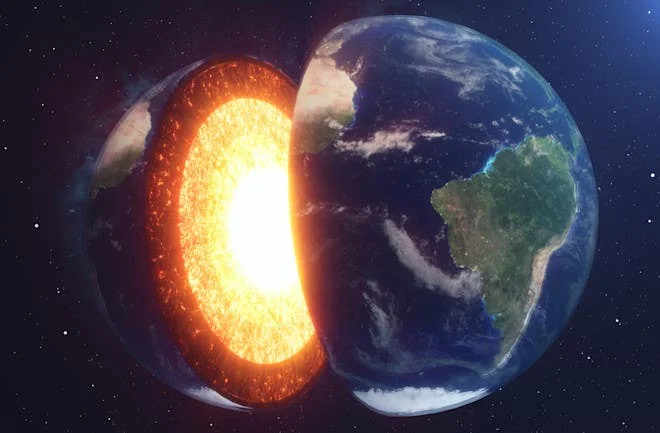
Earth’s Deep Secrets: Unveiling Hidden Giants and Mysterious Mantle Zones
What lies beneath our feet is far more complex than we ever imagined. Recent scientific breakthroughs are challenging our understanding of Earth's interior, revealing hidden giants and perplexing mantle zones that rewrite textbook knowledge. Get ready to question what you thought you knew about our planet, as scientists unearth secrets buried deep within.
Mount Everest, the undisputed king of mountains, may have a contender for the title of 'Tallest' – deep beneath the Earth's surface. Scientists have discovered two massive structures, known as Large Low Seismic Velocity Provinces (LLSVPs), that dwarf Everest in size, being over 100 times taller. This literal groundbreaking research was published recently in the journal Nature.
These 'mountains' residing approximately 1,200 miles deep in the Earth's mantle, beneath Africa and the Pacific Ocean, aren't just tall, they're incredibly dense. Researchers believe they might be ancient remnants of tectonic plates submerged billions of years ago, potentially offering critical insights into Earth's early geological history.
A Groundbreaking Seismic Discovery The discovery of these enormous mountains, known as Large Low Seismic Velocity Provinces (LLSVPs), was made possible through the study of seismic waves. These waves, generated by powerful earthquakes, slow down when they pass through areas of different material densities.
By analyzing how seismic waves behave deep within the Earth, scientists were able to pinpoint the existence of these massive structures beneath the surface.
While Mount Everest rises just 5.5 miles above sea level, the newly discovered mountains stretch far beyond, challenging previous ideas about the Earth’s inner layers.
These mountains (red) are hidden beneath the Earth on the boundary between the core and the mantle beneath Africa and the Pacific Ocean. (Edward Garnero; S. W. French, B. A. Romanowicz, Geophys. J. Int. 199, 1303, 2014.)
But the story doesn't end there. Seismic waves are also revealing strange, previously unknown zones within the Earth's mantle, as noted by researchers at ETH Zurich and the California Institute of Technology. Using a cutting-edge imaging method called full-waveform inversion (FWI), they found areas where wave speeds defied expectations.
Traditionally, faster wave speeds suggested colder or denser rock, often linked to subduction zones. However, many of these new anomalies are far from any known subduction zones, challenging established geological models. As Thomas Schouten, a doctoral student at the Geological Institute of ETH Zurich and lead author of the study, notes, "Apparently, such zones in the Earth's mantle are much more widespread than previously thought... But we don't know exactly what they are."
Could these anomalies be remnants of ancient materials from the Earth's formation? Scientists are now considering more complex models incorporating both thermal and chemical differences within the Earth. Professor Andreas Fichtner of ETH compares the discovery to a doctor using a better imaging tool for the first time: "That’s exactly how we feel about the new findings.”
The implications are significant. These discoveries urge us to revisit existing knowledge of plate tectonics and Earth's dynamic processes. Our home planet is far more complicated than once thought. The way they move gives scientists important clues, but wave speed alone tells only part of the story. The speed depends on many factors, such as rock composition, temperature, and pressure. This makes interpreting wave data tricky.
But the quest for knowledge never ends, and there is always more to understand about our home planet.
What do you think these hidden giants and mantle zones are made of? Share your thoughts and theories in the comments below!